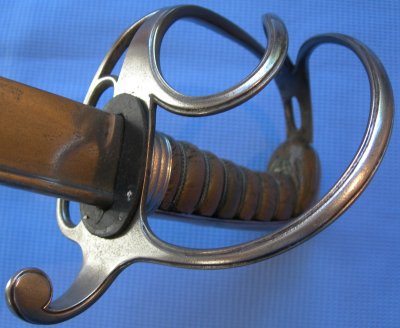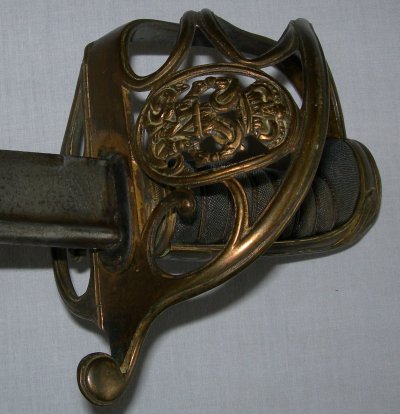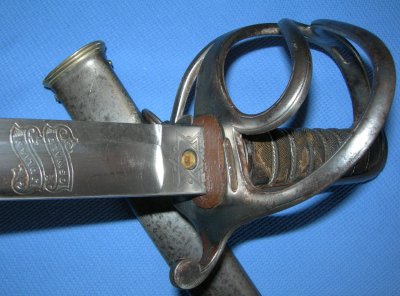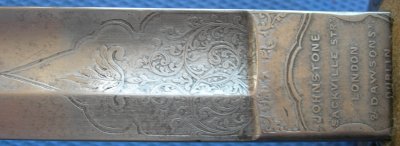Roger,
I am thrilled to see this thread. It isn't too often that someone here besides me starts a thread on British swords of the Victorian period. :) You have done some good research so far!
Patterns of 1821
To clarify, there is no single
1821 pattern, but several: Pattern
1821 Light Cavalry Officer's Sword, Pattern
1821 Light Cavalry Trooper's Sword, Pattern
1821 Heavy Cavalry Officer's Sword, and Pattern
1821 Heavy Cavalry Trooper's Sword. The term "Pattern
1821" was introduced by Brian Robson based on surviving correspondence dating to
1821 which refers to the new pattern swords for the cavalry. However, the patterns were officially introduced until the 1822 Dress Regulations, so Pattern 1822 is not incorrect, but due to Robson's influence is less commonly used. Additionally, a new sword for infantry officers was introduced in 1822, and is known as the Pattern 1822 Infantry Officer's Sword. So based on Robson's use of
1821, and to avoid confusing the cavalry swords with the Pattern 1822 Infantry Officer's Sword, I prefer to use the year
1821 when discussing these patterns.
Since the Napoleonic Wars officers of the Royal Artillery carried the same regulation patterns that were required for infantry officers, while their counterparts in the Royal Horse Artillery carried the regulation patterns worn by light cavalry officers. Brian Robson (
Swords of the British Army, 1996) states that at some undetermined point in the late 1840s, officers in RA gave up carrying the infantry pattern sword in favor of Pattern
1821 Light Cavalry officer's sword. Robson tries to pinpoint a date for this change by examining portraiture of the period, and determines that this change probably occurred in 1846-47. The Dress Regulations of 1857 describe the the sword for all artillery officers as "Regulation, Light Cavalry". The Pattern
1821 Royal Artillery Officer's Sword, as it is now known, is still the regulation pattern for officers of the Royal Artillery.
As Roger shows, the Pattern
1821 Light and Heavy Cavalry Officers' Swords, and the Pattern 1822 Infantry Officers' Swords of the late Georgian and early Victorian periods featured the pipe back blade which was apparently designed by George IV's favorite maker, Prosser. This blade type became popular during the Napoleonic period and can be seen on various officers' swords of the 1814-21 period, including variants of the well-known 1796 patterns. By the mid-1840s, Wilkinson's more robust single fullered blade became standard, and was officially adopted in 1845 for infantry officers (and apparently informally adopted by officers in other branches of service).
Criticisms
As for the criticism of the blade design, I think Henry Wilkinson was probably right, but some pipe backs are more robust than others, and some even opted for this blade as late as the 1850s (See Graeme Rimer's "The Swords of John Jacob",
Royal Armouries Yearbook, 1997). But overall I think that the switch the "Wilkinson" blade was a good choice. It should be noted that the troopers' swords had blades similar to the "Wilkinson" blade, not pipe back blades.
The brass "Gothic" hilt of the P1822/45/54 Infantry Officers' Swords was much maligned during its lifetime, but was not officially replaced until 1895. Some versions of this guard were specially made in polished or gilt steel for the discerning swordsman, and steel versions of this hilt were officially adopted for officers of rifle regiments (Pattern 1827) and officers of Guards regiments (Pattern 1854).
The Flashman criticism does not reflect historical reality: no British cavalry swords were made with metal grips. The Pattern 1853 Cavalry Sword (the first universal pattern for both light and heavy cavalry) had a rather round grip which made edge alignment difficult as the sword apparently could turn in the hand at the wrong moment. This is the closest thing I can find to the Flashman criticism of cavalry swords.
------
I hope that all makes sense! and that it answers your questions and clarifies some points! Anyone interested in further reading on the subject of British military swords might be interested in the following thread I posted at the Victorian Wars Forum:
A VWF Guide to British Military Swords, 1837-1913
I would also suggest the following articles which address some specific swords that deviated from the regulations or were otherwise non-standard:
"The Swords of John Jacob" by Graeme Rimer (
Royal Armouries Yearbook, 1997)
"Swords for the Crimea: Some Scottish Swords Manufactured for Britain's War with Russia, 1854-56" by Stephen Wood (
Journal of the Arms and Armour Society, Vol XVIII No.3 March 2003)
"Fighting Sword of a British Officer" by Gordon Byrne (
Caps & Flints, Vol. 20, No. 5, June 2008)
I hope that was helpful!
All the best,
Jonathan
















